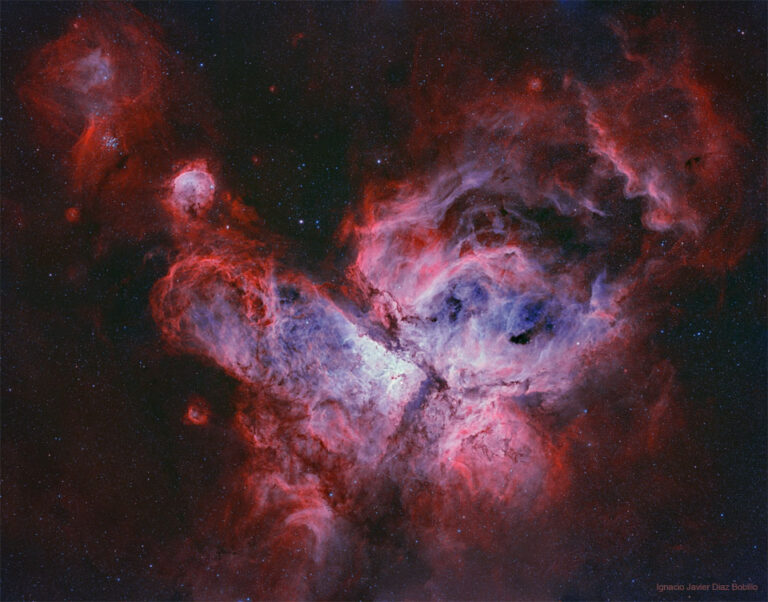船底座星云的核心
2024年2月5日 In the Core of the Carina Nebula Image Credit & Copyright: Carlos Taylor Explanation: What’s happening in the core of the Carina Nebula? Stars are forming, dying, and leaving an impressive tapestry of dark dusty filaments. The entire Carina Nebula, cataloged as NGC 3372, spans over 300 light years and lies about 8,500 light-years away in the constellation of Carina. The nebula is composed predominantly of hydrogen gas, which emits the pervasive red and orange glows seen mostly in the center of this highly detailed featured image. The blue glow around the edges is created primarily by a trace amount of glowing oxygen. Young and massive stars located in the nebula’s center expel dust when they explode in supernovas. Eta Carinae, the most energetic…




